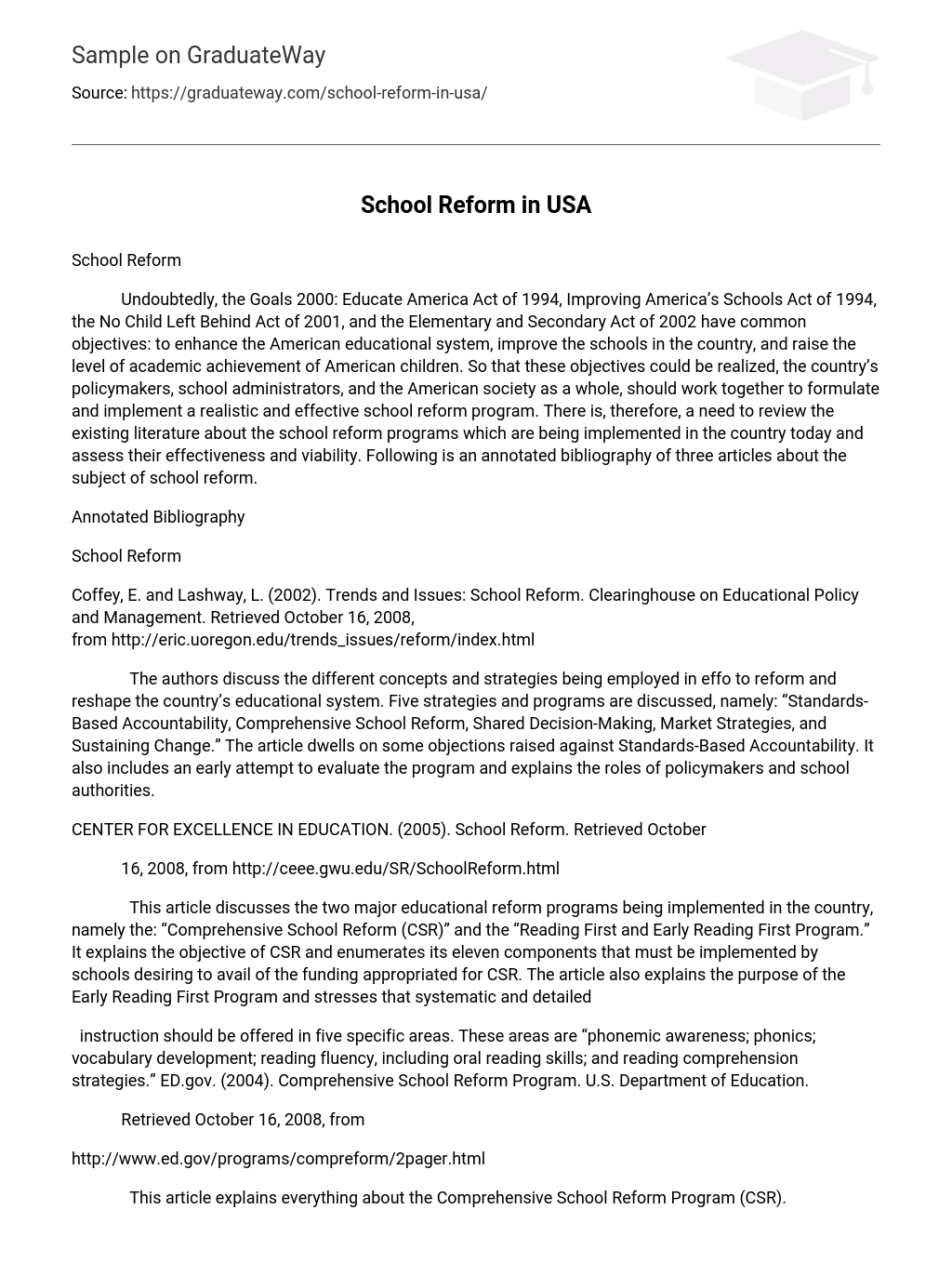School Reform
Undoubtedly, the Goals 2000: Educate America Act of 1994, Improving America’s Schools Act of 1994, the No Child Left Behind Act of 2001, and the Elementary and Secondary Act of 2002 have common objectives: to enhance the American educational system, improve the schools in the country, and raise the level of academic achievement of American children. So that these objectives could be realized, the country’s policymakers, school administrators, and the American society as a whole, should work together to formulate and implement a realistic and effective school reform program. There is, therefore, a need to review the existing literature about the school reform programs which are being implemented in the country today and assess their effectiveness and viability. Following is an annotated bibliography of three articles about the subject of school reform.
Annotated Bibliography
School Reform
Coffey, E. and Lashway, L. (2002). Trends and Issues: School Reform. Clearinghouse on Educational Policy and Management. Retrieved October 16, 2008, from http://eric.uoregon.edu/trends_issues/reform/index.html
The authors discuss the different concepts and strategies being employed in effo to reform and reshape the country’s educational system. Five strategies and programs are discussed, namely: “Standards-Based Accountability, Comprehensive School Reform, Shared Decision-Making, Market Strategies, and Sustaining Change.” The article dwells on some objections raised against Standards-Based Accountability. It also includes an early attempt to evaluate the program and explains the roles of policymakers and school authorities.
CENTER FOR EXCELLENCE IN EDUCATION. (2005). School Reform. Retrieved October
16, 2008, from http://ceee.gwu.edu/SR/SchoolReform.html
This article discusses the two major educational reform programs being implemented in the country, namely the: “Comprehensive School Reform (CSR)” and the “Reading First and Early Reading First Program.” It explains the objective of CSR and enumerates its eleven components that must be implemented by schools desiring to avail of the funding appropriated for CSR. The article also explains the purpose of the Early Reading First Program and stresses that systematic and detailed
instruction should be offered in five specific areas. These areas are “phonemic awareness; phonics; vocabulary development; reading fluency, including oral reading skills; and reading comprehension strategies.” ED.gov. (2004). Comprehensive School Reform Program. U.S. Department of Education.
Retrieved October 16, 2008, from
http://www.ed.gov/programs/compreform/2pager.html
This article explains everything about the Comprehensive School Reform Program (CSR). It defines the program, traces its legislative history, and explains its objectives and focus. The article also specifies the number and demography of public schools which will initially be targeted and strengthened based on the eleven components specified under the program. In this article, the U.S. Department of
Education explains that with an initial support of $308 million from Congress, the program not only aims to improve the country’s public schools but also to raise the achievement level of American students. The article explains that the resources allocated to CSR are meant to be used in supporting schools which are implementing strategies aimed at helping children from all sectors of society attain high levels of academic achievement particularly in English proficiency.





